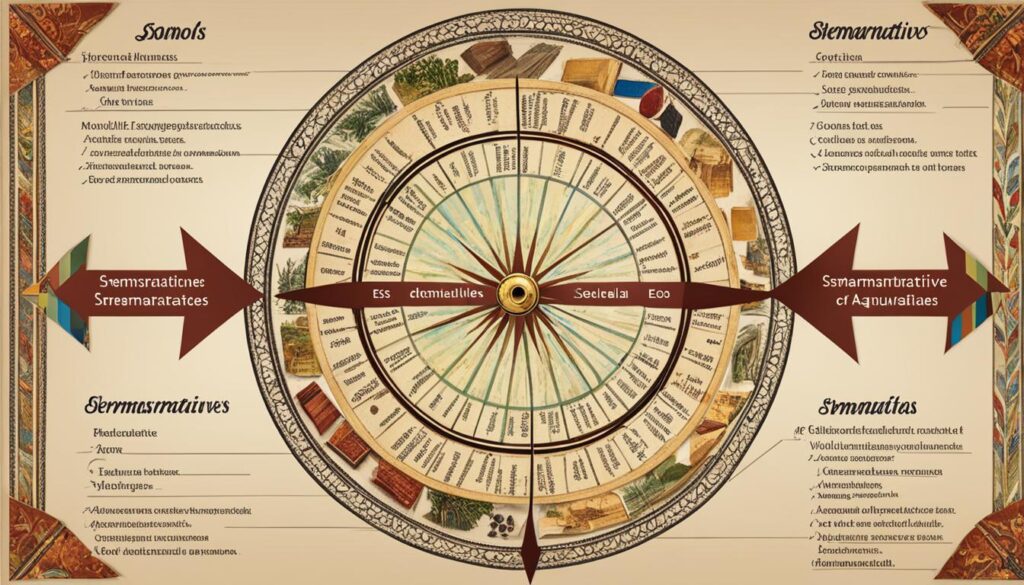Mastering demonstratives in Spanish is a critical component of boosting your Spanish language skills. Whether you’re an absolute beginner or an advanced learner, this comprehensive guide will help you understand their usage and pronunciation, ensuring you can communicate like a native speaker. Through detailed explanations and examples, you’ll refine your knowledge of these essential grammar tools, moving beyond the basics and exploring more advanced and nuanced approaches.
From differentiating between demonstrative adjectives and pronouns to addressing regional variations in their use, this educational guide is your key to mastering Spanish demonstratives and unlocking the door to fluency. So let’s dive in and enhance your Spanish language skills!
Understanding Spanish Demonstratives
Spanish demonstratives play an essential role in expressing proximity and distance in everyday language. A thorough understanding of Spanish demonstrative words helps learners navigate through conversations, enhancing their Spanish grammar essentials. In this section, we will dive into cómo usar los demostrativos en español.
Spanish demonstratives are classified into three categories based on the perceived distance from the speaker:
- ‘this’/’these’ (este/estos, esta/estas)
- ‘that’/’those’ (ese/esos, esa/esas)
- ‘that over there’/’those over there’ (aquel/aquellos, aquella/aquellas)
These demonstratives can function as pronouns and adjectives. As pronouns, they replace nouns when the context is clear. As adjectives, they describe nouns directly. The usage of Spanish demonstratives is context-dependent, influenced by factors such as physical proximity or time references.
Consider the following table to understand the connection between Spanish demonstrative words and their corresponding adjectives:
| Category | Adjective (Masculine) | Adjective (Feminine) | Adjective (Plural) |
|---|---|---|---|
| ‘this’ / ‘these’ | este | esta | estos / estas |
| ‘that’ / ‘those’ | ese | esa | esos / esas |
| ‘that over there’ / ‘those over there’ | aquel | aquella | aquellos / aquellas |
As you continue to practice and learn Spanish, incorporating demonstrative adjectives and pronouns into your speech and writing will enhance your ability to express yourself clearly and naturally.
Spanish Demonstrative Adjectives and Pronouns: Clearing the Confusion
Understanding the difference between Spanish demonstrative adjectives and pronouns can significantly improve your Spanish language learning experience. In this section, we will explore these two types of Spanish demonstrative words, discuss the grammar rules involved, and provide guidance on choosing the correct form of demonstratives in various contexts.
Defining Spanish Demonstrative Adjectives
Spanish demonstrative adjectives describe and modify nouns, providing information about the relative distance of the item being discussed. They agree in both gender and number with the noun they are modifying. There are three sets of Spanish demonstrative adjectives, each corresponding to a specific level of proximity:
- Este/Esta/Estos/Estas– used for close proximity
- Ese/Esa/Esos/Esas– used for objects not within immediate reach
- Aquel/Aquella/Aquellos/Aquellas– used for objects far away or events that occurred in the distant past
For example, to describe a close-by book, you would say “este libro” while a distant car would be “aquel coche.”
Exploring Spanish Demonstrative Pronouns
Spanish demonstrative pronouns replace nouns in a sentence when the context is clear, and like demonstrative adjectives, they agree in gender and number with the noun they are replacing. However, they are used without an accompanying noun. Some common everyday expressions include:
- ¡Eso! (That’s it!)
- ¿Cómo va eso? (How is that going?)
In these examples, ‘esto,’ ‘eso,’ and ‘aquello’ function as pronouns, replacing the implied noun being discussed.
Choosing the Right Demonstrative: Adjective or Pronoun?
When deciding between using a demonstrative adjective or pronoun in Spanish, the key factor is whether the noun has been mentioned before or is obvious to both the speaker and listener. Use a demonstrative adjective when the noun is not mentioned in the sentence, while a pronoun replaces a previously mentioned noun, often for emphasis or brevity.
Here’s a comparative example:
- ¿Cuál libro prefieres? Me gusta ese libro. (Which book do you prefer? I like that book.)
- ¿Cuál prefieres? Me gusta ése. (Which one do you prefer? I like that one.)
In the first example, the noun “libro” is mentioned in the sentence, so the demonstrative adjective “ese” is used. In the second example, the noun is clearly understood from the context, so the demonstrative pronoun “ése” is used instead.
By understanding the differences and rules surrounding Spanish demonstrative adjectives and pronouns, you can now effectively use these important elements of the language in your daily conversations, with increased confidence and accuracy.
Practical Examples of Spanish Demonstratives in Use
Mastering demonstratives is essential for effective communication in any language, and Spanish is no exception. In this section, we will explore some common scenarios in which Spanish demonstratives are regularly used, providing tangible examples to help learners grasp the concepts in practice. From shopping exchanges to discussing past events, these examples showcase the practical Spanish use of demonstratives in everyday life.
- Shopping in a store: Imagine you are at the bakery selecting bread, and you need to specify which type you desire.
- Excuse me, how much does este bread cost? (Referring to a loaf close to you)
- Could you give me ese one over there? (Pointing at a loaf further away)
- How much is aquel bread behind the counter? (Referring to a loaf far away)
- I like esta blouse, but I prefer the color of esa one. (Comparing two blouses in front of you)
- Do you have aquel dress in a different size? (Referring to a dress far away)
- Remember when we went to ese concert last month? It was incredible.
- Aquella time we went hiking was so exhausting! (Referring to an event in the distant past)
As we can see from these Spanish conversation examples, the use of demonstratives is ubiquitous in everyday communication. They help create a precise and clear message by specifying the items or events being discussed. By practicing these examples of Spanish demonstratives and incorporating them into your conversations, you will enhance your Spanish language skills and communicate more effectively with native speakers.
Beyond the Basics: Advanced Usage of Demonstratives in Spanish
Delving into the advanced usage of demonstratives in Spanish requires an understanding of regional variations in usage and the subtle nuances between different dialects. In this section, we explore the peculiarities and distinctions in using demonstratives across Spanish-speaking regions, with a particular focus on Latin American Spanish.
Regional Variations in Using Spanish Demonstratives
While the general rules for using demonstratives apply across all Spanish-speaking regions, there are some notable regional variations in practice. For instance, the demonstrative ‘aquel’ is less common in everyday speech in some Latin American countries and is predominantly seen in literature. In these regions, speakers tend to prefer using ‘ese’ in place of ‘aquel.’ A common example of this variation is the phrase ‘en ese entonces’ (back then), which replaces the more formal ‘en aquel entonces’ in certain contexts.
This regional preference showcases the dynamic nature of the Spanish language, adapting and evolving according to the local context. As you progress in your language learning journey, understanding these regional differences will strengthen your Spanish skills and your ability to communicate effectively across diverse Spanish-speaking communities.
FAQ
What are the main Spanish demonstratives?
The main Spanish demonstratives are ‘este/esta/estos/estas’ (this/these), ‘ese/esa/esos/esas’ (that/those), and ‘aquel/aquella/aquellos/aquellas’ (that over there/those over there), indicating different levels of proximity or distance.
What is the difference between Spanish demonstrative adjectives and pronouns?
Spanish demonstrative adjectives describe nouns directly and agree in gender and number with the nouns they modify, while Spanish demonstrative pronouns replace nouns when the context is clear and also agree in gender and number with the nouns they replace.
How do you choose between using a Spanish demonstrative adjective or pronoun?
To choose between using a Spanish demonstrative adjective or pronoun, consider whether the noun has been already mentioned or is obvious to both the speaker and listener. If the noun is not mentioned in the sentence, use an adjective; if the noun is previously mentioned or obvious from context, use a pronoun.
Are there any regional variations when using Spanish demonstratives?
Yes, there are some regional variations in the use of Spanish demonstratives, particularly in Latin America. For instance, in some areas, ‘aquel’ is less common in everyday speech and may only appear in literature, whereas ‘ese’ is used in its place. Phrases like ‘en ese entonces’ (back then) might replace ‘en aquel entonces’ in certain contexts, demonstrating regional preferences and variations in Spanish language usage.
In which contexts do Spanish speakers commonly use demonstratives?
Spanish speakers commonly use demonstratives in everyday dialogue and various contexts, ranging from shopping interactions and giving instructions to referring to specific items among many or commenting on the proximity of objects or events in time. They are integral to precise communication.






